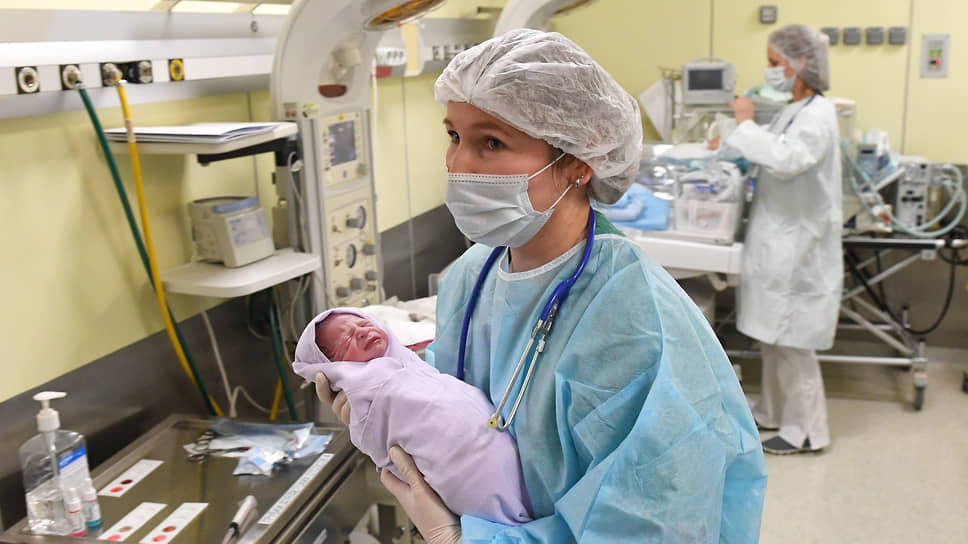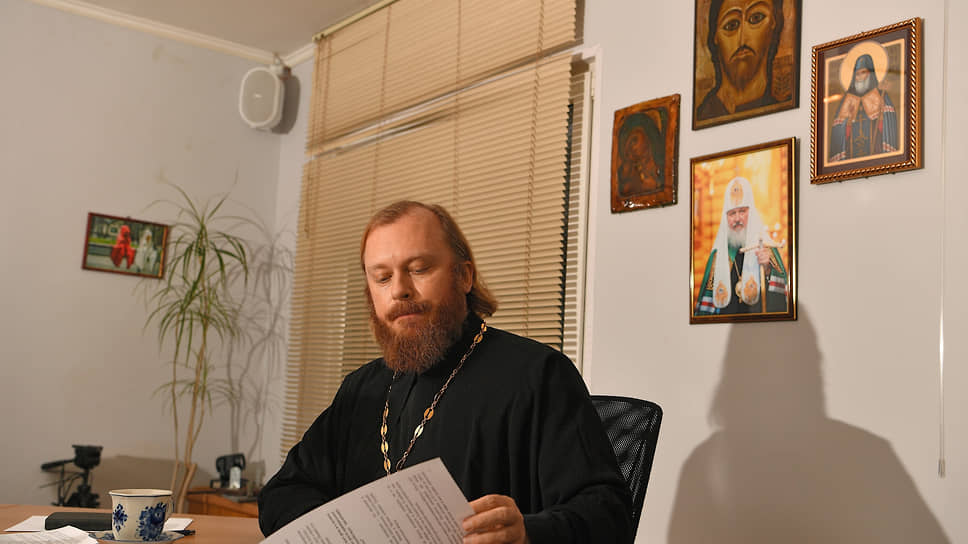Column by Natalya Kostarnova about how supporters of the ban on abortion in 2023 turned to the experience of 1936
[ad_1]
Until 2023, only representatives of the Russian Orthodox Church, who are entitled to it in accordance with their religion, and odious deputies like Vitaly Milonov spoke about banning abortion in Russia. Back in 2019, before it became mainstream, he proposed equating abortion with murder and introducing criminal liability for it. However, in 2023, proposals to, if not completely ban, then at least severely limit abortions began to be heard so often that at the end of the year, the top officials of the state had to remind: a complete ban is not expected, and the fight against abortion is not the only way to correct the demographic situation.
The next bell rang in August: Mordovia suddenly passed a law banning inducement to terminate a pregnancy and the promotion of abortion. The Kommersant correspondent did not find any convincing explanation for such efficiency – except perhaps one coincidence: Natalya Moskvitina, a member of the Public Chamber of Mordovia, is also the head of the Women for Life foundation, which “represents, promotes and defends the ideas of pro-life (pro-life – originally an American designation of supporters of the ban on abortion, as opposed to pro-choice – supporters of the unconditional preservation of a woman’s right to choose.— “Kommersant”)”. Vice Speaker of the State Duma Anna Kuznetsova thanked the head of Mordovia, Artem Zdunov, for a worthy position, and then, like a snowball, initiatives to ban, fine, and ultimately persuade women to bear children rolled across the regions. The “crown” became introduced Recently, a bill from Nizhny Novgorod deputies was submitted to the State Duma to ban abortions in private clinics. And while the parliamentary committee on health protection is developing a position on this matter, supporters and opponents of the abortion ban are turning to the experience of the USSR.
In the Russian Empire, as an Orthodox state, artificial termination of pregnancy, of course, was considered a crime and was punishable by prison.
Soviet Russia in 1920 became the first country in the world to legalize abortion. This decision was a consequence of expanding the rights of Soviet women and updating medical ethics.
Further, abortion legislation was tightened, then vice versa, until in 1936 the Central Executive Committee and the Council of People’s Commissars of the USSR issued a resolution “On the prohibition of abortion, increasing financial assistance to women in labor, establishing state assistance for large families, expanding the network of maternity hospitals, nurseries and kindergartens, strengthening criminal penalties for non-payment of alimony and some changes in divorce legislation.”
As today, the initiators of the ban hoped to increase the population in this way. The text of the resolution itself stated that the government agreed “to meet the numerous statements of working women.” And current supporters of removing abortions from the range of services of private clinics assure that “private clinics themselves come and ask to exempt themselves from abortions.”
Candidate of Economic Sciences, Associate Professor of the Department of Demography at the Institute of Demography at the Higher School of Economics Victoria Sakevich points out that after the ban on abortion in 1936, the Soviet government made a lot of efforts to give it an ideological justification. Here, for example, are excerpts from an article by prominent party leader Aron Solts: “We need more and more new fighters – builders of this life. We need people. Abortion, the destruction of nascent life, is unacceptable in our state of socialism under construction (…) Our Soviet woman is not exempt from the great and honorable duty that nature has endowed her with: she is a mother, she will give birth. And this, undoubtedly, is a matter of great social significance.” The explanatory note to the bill on the withdrawal of abortions from private clinics in some places echoes the text of almost 90 years ago to the point of confusion: “Health care is entrusted with measures for the implementation of the national project “Demography” within the framework of the project “Financial support for families at the birth of children.” Every child born is valuable and important to society. An increase in the birth rate is possible, among other things, by reducing the number of cases of artificial termination of pregnancy at the request of a woman.”
People’s Commissar of Health Nikolai Semashko published an article in the newspaper “Medical Worker” in 1937, “What a wonderful law! (Towards the abolition of abortion in the USSR)”. In 1939, the newspaper Krasnogvardeiskaya Pravda published a letter from mothers of many children to Joseph Stalin, dedicated to the third anniversary of the decree: “Mothers of many children thank Comrade Stalin, the party and the government for this historical document, which is the law of happy motherhood. In their letter, the mothers promise to raise healthy, cheerful children, ardent patriots of our great homeland.” Now Deputy Speaker of the Duma Anna Kuznetsova, a mother of seven children, says: “The task of the state is to ensure that a moral, value choice is made in favor of life, in favor of having children.”
From a rhetorical point of view, there is nothing unique in this: conservatives in a number of now unfriendly countries have defended and continue to defend the ban on abortion using the same arguments: every life is valuable and necessary. True, not in all cases can this same thesis be extended to support motherhood.
Opponents of a ban or restriction of abortion (among them there are many more doctors, while the ban is advocated more by social activists than by doctors) point out that the Soviet law did not lead to an increase in the birth rate. More precisely, as Victoria Sakevich writes, the desired effect was only in the first year of his work: for example, in Leningrad hospitals in the first half of 1936, 43.6 thousand abortion operations were performed, and in the second half of the year – only 735; the number of births in Moscow increased from 70 thousand in 1935 to 136 thousand in 1937. However, by 1940 the birth rate had returned to its previous level. According to some reports, in the first three years of the ban, more than a million illegal abortions could have been performed in the country, and then a million clandestine abortions annually. Three-quarters of such out-of-hospital operations were performed by people without medical education, and every third “criminal” was admitted to the hospital with life-threatening sepsis. In the 1940s, at least 2 thousand women a year died from the consequences of poorly performed abortions. By the 1950s, deaths from abortion accounted for 70% of maternal mortality. As a result, in 1951, the Soviet government expanded the list of indications for medical abortion, and in 1954 it legalized abortion, although it never positioned it as a socially encouraged choice.
Supporters of the fight for unborn lives say Ms. Sakevich and other researchers are perpetuating unsubstantiated myths. Thus, the chairman of the Patriarchal Commission on Family Issues, Protection of Motherhood and Childhood, Priest Fyodor Lukyanov, claims that it is not clear how many maternal deaths during the period of the ban on abortion were due to criminal abortions, and, in fact, states that the death of 2 thousand women a year is not too much noticeable against the background of the total population of the USSR: “What was the total population in 1940? Almost 200 million. That is a percentage [умерших женщин] in relation to the population – minimal,” he said in an interview with Kommersant. The priest considers the Soviet experience in the fight against abortion successful: in his assessment, even the Great Patriotic War did not prevent the birth rate from rising, “because it is natural for a person to give life, it is natural for him to love.” The question of whether the ban on abortion can be considered the only reason for maintaining demographic growth in the USSR in the middle of the 20th century remains, as a rule, outside the scope of discussion.
It should be noted that these days the fight against abortion is taking place against the background of its steady decline: from a peak of 4.6 million cases in 1988, the number of such operations in Russia by 2015 decreased by 5.5 times, to 800 thousand.
Now, according to official data, 500 thousand abortions are performed a year, of which about 370 thousand are artificial abortions. And, by the way, back in 2004, according to the UN, Russia topped the list of leaders in the number of abortions – the figure reached 53.7 per 1 thousand women. The country came to a decline without resorting to a ban.
Whether the bill of Nizhny Novgorod deputies will be adopted and developed will be clear next year. However, at the end of 2023, the country’s top officials tried, it seems, to cool some particularly violent heads. President Vladimir Putin during the December “Results of the Year” explainedthat the authorities, of course, are interested in women making decisions in favor of preserving the life of the child. But at the same time, women’s rights and freedoms must be respected. The head of state recalled the costs of the Soviet anti-alcohol campaign in the second half of the 1980s, and then allegedly contrasted options for solving demographic problems: “Ban the sale of drugs that terminate pregnancy, or improve the socio-economic situation in the country, increase the level of well-being, real wages, social services, assistance to young families in purchasing housing.” Shortly before Vladimir Putin, the chairman of the Federation Council, Valentina Matvienko, promised not to ban abortions or criminalize them, but still to move towards ensuring that Russian women terminate their pregnancies only for two reasons – in case of violence or for medical reasons.
[ad_2]
Source link










